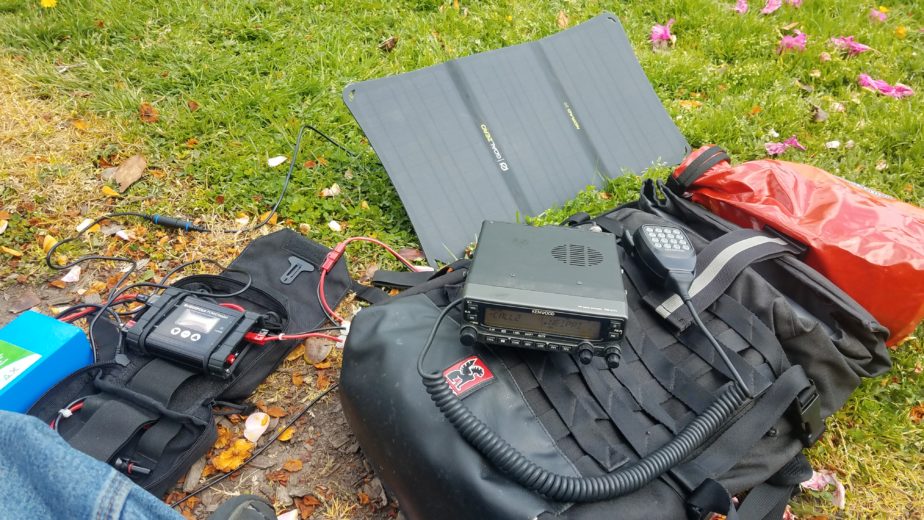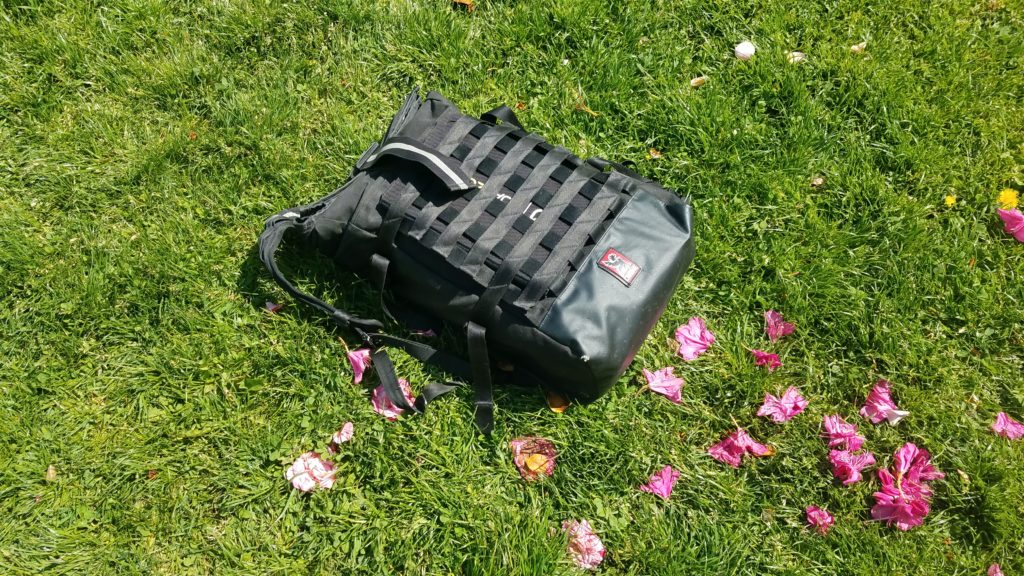
Hello, long time and no post! Tonight I decided to test out an antenna a friend of mine, K7AJK, let me borrow which also enabled me to make my first attempt to work 6m! This antenna is a Par EndFedz 6m end-fed dipole, and it works on, you guessed it! The 6m (50-54MHz) band. This is my first attempt at working this band, and yet another attempt to make phone (voice) contacts with my Lab599 TX-500, a newer QRP rig which is capable of a maximum transmit power of 10W. With this antenna and band I decided to attempt to use single-sideband (SSB) for my phone contact as most of my digital communications and work use SSB. Since I’m working SSB instead of FM, the antenna should be oriented horizontally to ensure better signal propagation and better changes of making contact with other SSB stations. The kind of propagation I’m going for here is groundwave propagation, meaning I’m attempting to get my signal out over the ground to reach other stations rather than attempting to bounce it off the atmosphere as would be the case with other types of 6m propagation. To get the antenna up and off the ground away from the roof and gutters of the house I set my speaker stand antenna mast up with the “matchbox” end of the antenna connected to some guy wire eyelets on the dowel portion of the mast, and the other end attached to a post coming up from some raised garden beds. This got the antenna about 9-10′ off the ground and away from the gutters which is fine for a test run.

A good place to start when attempting to make contacts on a specific band is to choose that band’s calling frequency, or at least a region of the band that others using the mode you’ve chosen are likely to be. For 6m SSB the calling frequency is 50.125MHz, in the bottom half of the band. I use this handy chart by iCOM to keep track of what regions are used by operators, and to understand specific frequencies that have specific uses such as SSTV and calling frequencies. I parked on the 6m SSB calling frequency and called a few times with no answer. I enlisted the help of Kevin, K7AJK to see if he could use any antenna and tune his radio to the calling frequency. As I asked him to do that another station in Vancouver, WA that was about 10 miles away came in running 50W. As I began a QSO with the other station at 5W K7AJK’s station got the brunt of the power as it was nearby. Fortunately he had his attenuator on and even with a vertically polarized antenna it swamped the receiver. As that was happening I was able to drop power to 1W and then raise it to 2.5W. The station in WA was still able to read me at lower power levels, albeit I was scratchy. That bodes pretty well none the less. The radio also drew less than 1A at 5W of transmit power as measured with a Buddipole PowerMini that I hooked up. The radio drew about 0.13A receiving only.






